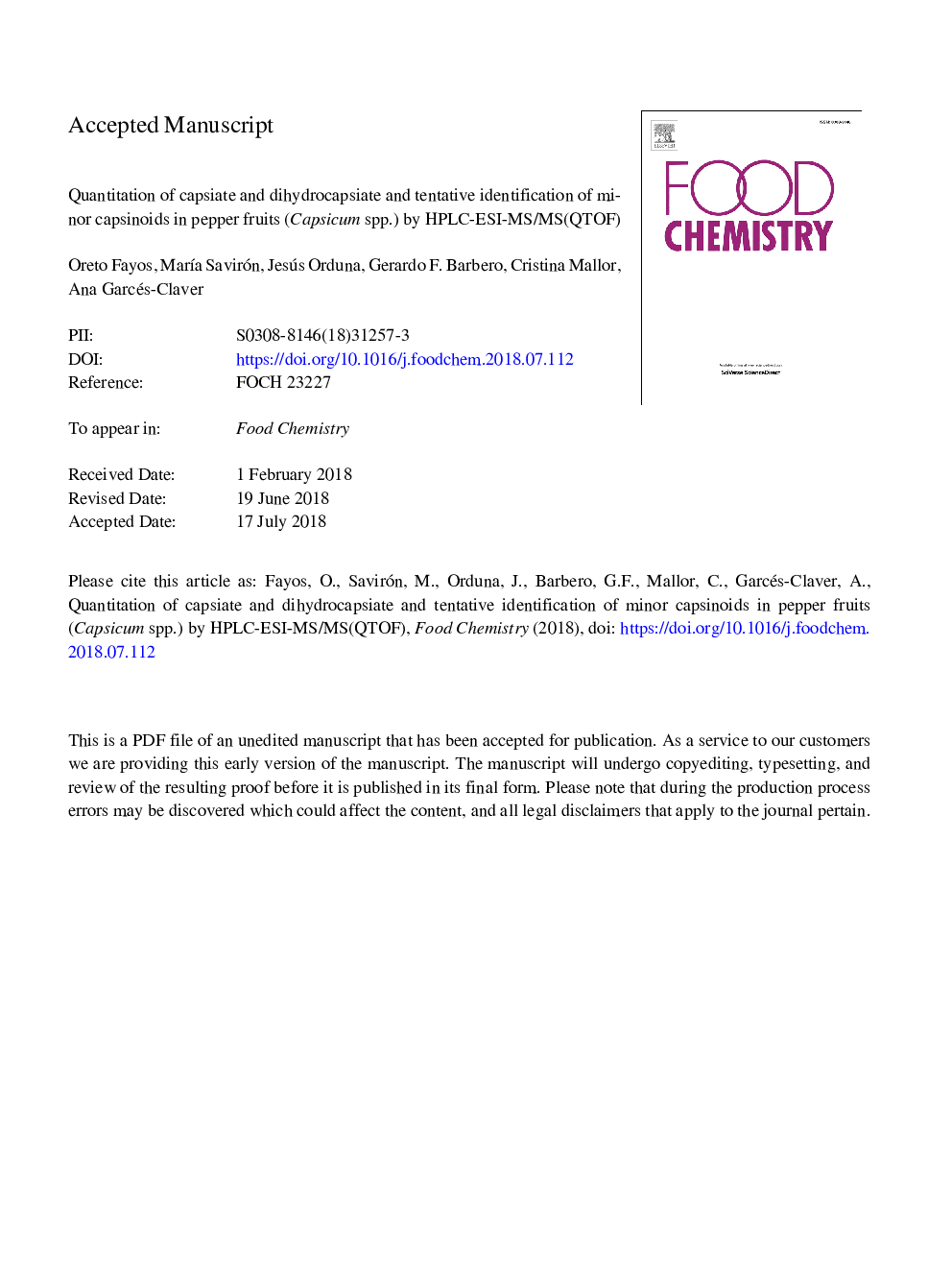| Article ID | Journal | Published Year | Pages | File Type |
|---|---|---|---|---|
| 7583909 | Food Chemistry | 2019 | 36 Pages |
Abstract
A highly sensitive, selective method has been developed and validated for determination of capsiate and dihydrocapsiate for the first time using HPLC-ESI/MS(QTOF). For both capsinoids, LODs and LOQs were 0.02 and 0.05â¯Âµmol/l, respectively. The intra- and interday repeatability values (RSD %) were 0.26-0.41% for retention time, and 2.25-2.11% for peak area. Recoveries were up to 98% and 97% for capsiate and dihydrocapsiate, respectively. This method was successfully applied to quantify capsiate and dihydrocapsiate in eight pepper fruit accessions. Capsinoids were found in the range of 1.21-544.59â¯Î¼g/gâ¯DW for capsiate and of 0.61-81.95â¯Î¼g/gâ¯DW for dihydrocapsiate. In the 'Tabasco' accession, capsiate and dihydrocapsiate were quantified for the first time, ranging from 3.09 to 58.76 and 1.80 to 6.94â¯Î¼g/gâ¯DW, respectively. Additionally, the ESI-MS/MS(QTOF) analysis has allowed the tentative identification of two other minor capsinoids by exact mass and fragmentation pattern, in the 'Bhut Jolokia' accession.
Keywords
CapsiateUHPLCESIRSDRP-HPLCPDADADLOQqTOFReversed-phase HPLCMS/MSUV/Visphoto-diode arraydiode array detectorUltravioletFragmentation patternrelative standard deviationLOD یا Limit of detectionRetention timequadrupole time-of-flightMass spectrometryTandem mass spectrometryCapsicumFluorescenceultraviolet/visiblelimit of quantificationlimit of detectionfresh weightdry weightliquid chromatographyhigh performance liquid chromatographyUltra-high performance liquid chromatographyHPLCCapsinoidselectrospray ionization
Related Topics
Physical Sciences and Engineering
Chemistry
Analytical Chemistry
Authors
Oreto Fayos, MarÃa Savirón, Jesús Orduna, Gerardo F. Barbero, Cristina Mallor, Ana Garcés-Claver,
